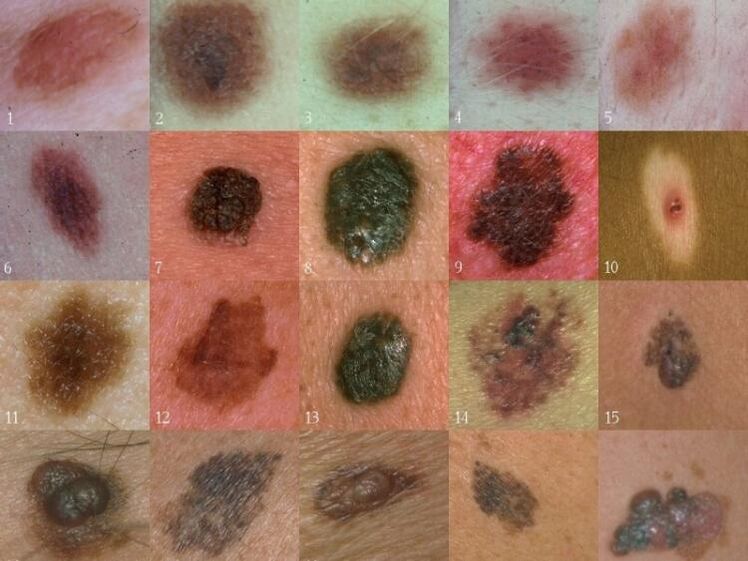
Some types of human papillomavirus, penetrating into damaged areas of the skin, cause rapid growth of cells in its upper layer. As a result, warts are formed. The types of warts can vary. They occur anywhere on the skin and can vary greatly in size and color. Usually warts do not bring significant problems, they pass on their own. However, in some cases it may be helpful to consult a doctor and remove them.
Types of warts on the body are usually distinguished by their distribution.
types of warts
- rude (common)
- plantar,
- straight (young),
- Genital warts (genital warts)
- fibrous,
- Senile (seborrheic keratomas).
common warts
Coarse or diffuse - this is the most common type of these neoplasms. They are small nodules (up to 10 mm) with a rough surface. They protrude just slightly above the surface of the skin and are completely painless. Common warts can occur anywhere on the body, but are most often found on the neck, head, elbows or knees.
Another feature of common warts is that the "main", large warts appear next to smaller ones.
plantar
This is one of the common wart varieties, also called "Spitz". It is found on the skin of the foot, mostly near the sole. It consists of several fused papillae surrounded by a roll. Sometimes the Spitz looks like a dense thorn growing on the skin. Sometimes plantar warts can grow deep into the skin. Then they look like a fossa surrounded by a cylinder with protruding papillae. Plantar warts often cause discomfort to a person, as they cause discomfort and even pain when walking.
Their occurrence can be triggered by tight or uncomfortable shoes. In such shoes, areas of the skin are damaged and become more vulnerable to the penetration and development of the human papillomavirus.
Straight
Flat warts are more common at an early age, in children and adolescents, and are therefore called juveniles. These are small formations (usually about 3 mm). They can be round or irregular. The surface of juvenile warts is smooth and flat. The color is usually the same as that of the skin, sometimes flat warts can take on a yellowish tint. Such warts can occur anywhere on the skin, but their "favorite" places are the face and hands.
Flat warts usually do not cause physical discomfort and will disappear over time. However, when placed in prominent places, they cause aesthetic discomfort, so patients often turn to doctors and cosmetologists to remove them.
genital warts
Such warts are localized in the genital area and infection occurs through sexual contact. The most common spread of genital warts is on the groin, penis, labia, and anus. In addition, this type of warts can occur in the mouth.
Genital warts are small skin growths with sharp ends, small papillae. These papillae fuse with each other and often look like cauliflower. The color of genital warts is dark tan, pink.
Treatment of genital warts is carried out by dermatovenerologists with the participation of a gynecologist or urologist.
fibrous
Filamentous warts (acrochords) are more common in older people. They are long growths that resemble a thread. The size of filamentous warts can be up to 1 cm. The localization of the acrochord is the skin of the neck and face. Most often, they are formed on the eyelids, lips. There are filamentous warts on the armpits.
Acrochords are often injured because of their elongated shape. By themselves, in most cases they do not disappear, in addition, after removal there are often relapses with the formation of new warts in the same places.
senile
Seborrheic keratomas most often develop in old age due to skin changes. They can be found anywhere on the body, but more often on the neck, arms, chest. These are small flat papules with clear borders. Senile warts are more often yellow-pink or brown in color, their size is up to 2 cm. They can be single and form entire foci. Dead skin cells form the basis of such neoplasms. At first they are soft, but over time they become dense, covered with cracks.
Senile warts require careful attention, as they are prone to malignant transformation.
So, there are different types of warts. Most of them are harmless, but it is better to consult a doctor without delay and be sure of this.















































































